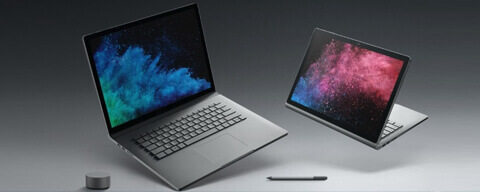Why are people afraid to move from Windows to Mac?
A lot of time has been devoted to discussing the most used operating systems, Windows, and Mac OS X. The first has more than 80% of the market, the second does not reach 17%, but is clearly favored by loyal customers of the brand that considered as the best operating system on the planet. But, why are people using Windows PC afraid of switching to Mac? Is it a matter of money?
There are many reasons for this in addition to the difference of money between both operating systems. One problem is that Mac OS X is free, but … you have to buy a Mac, and those machines are much more expensive than Windows machines. But what else? What is another argument there for people not to migrate to Apple? Below is
The main reasons why people don’t switch from Windows PCs to Mac?
The reasons are:
One of the fears that Windows Users have is that they have become familiar with the Windows interface. They already know all the shortcuts, know all the best free software for Windows to perform various tasks. They have also used all Windows software. Because changing from a known interface to a completely new interface is difficult. It is the same reason why people do not change Windows to any other operating system.
MacBook price is perhaps one of the most evident reasons one cannot consider when they ask about changing from Windows to Mac. Mac is too costly. Well, think about the Dirhams (AED) it would cost to buy a Mac, the price spent for a single Mac could be the equivalent to two Windows PCs, including all the useful software licenses and other applications you can buy and install in your Windows computers. A regular Apple system of AED 3500 (Approx.) can be equivalent to one of the most decent personal computers.
Most of the multi-platform software installation tutorials are aimed at the Windows user. If you are looking to solve a Windows PC problem(s), it is likely to solve the problem much more easily if you are a Windows user. You will get multiple solutions in multiple documents for the same problem for a Windows user. For example the other day I was trying to flash my Android Smartphone with a custom ROM using Linux, most of the solutions I found were aimed at Windows users. If you are a technician, it would not be a great effort to map the steps for the Android user, but it would be a bit difficult for a newbie.
The keyboard design for Windows PC and Mac is quite different. There is no Windows button on Mac.
There is no back button. What you did with the back button in Windows is done using the Delete button on Mac. There is no way to delete forward.
There are no home buttons, page up, page down, insert. However, they have a two-finger scroll with the touchpad or the mouse scroll button.
It gets irritating when people are used to finding the close button on the right side of Windows, and it’s located on the left side of the Mac window.
Little customization options. Very few product options (Apple is the only manufacturer): even with a Windows laptop they have customization possibilities. Like they can increase the RAM, add an SSD, change the Hard Drive, etc. in a Windows PC, you can replace every part not connected to the motherboard, but you cannot do that with Macs.
This could be the final reason why people do not switch to Mac. It is the fear of the unknown. The fear of taking the risk and spending money on something that they might not like and will not give them the same comfort as Windows does.
Final words
With what we have above, it is clear that the reason why Windows PC Users do not switch to Mac is that they may not find what they have on a Windows PC. People want to have the standard connectors, the system that can be used by the user, a system they can manipulate without fear, the old standard Phillips screws and the fact that they can quickly update parts of their system and have multiple options of suppliers in the purchase of replacement components for each piece.




